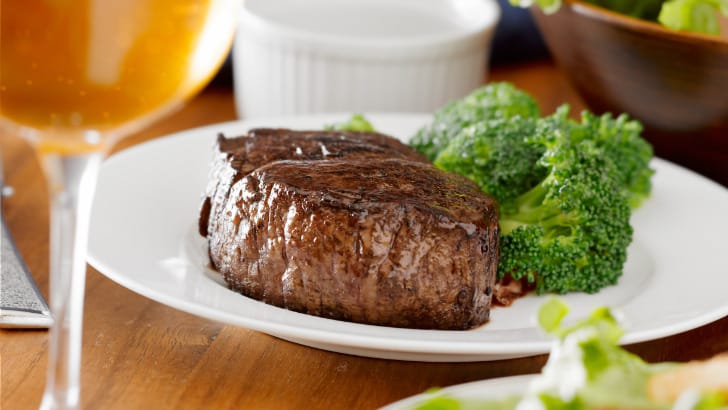In the ever-evolving sphere of fitness and bodybuilding, a balanced diet is the foundation that paves the path to success. Two major players that are routine nutritional recommendations for bodybuilders are steak and vegetables. These power-packed elements contain an essential blend of macronutrients and micronutrients, vital for muscle growth and overall health.
Read on to learn more about adding steak and veggies to your bodybuilding diet, including the different cuts of steak and types of veggies that can support your fitness goals.
Steak: Protein powerhouse
Steak is a popular protein source among bodybuilders. It has high amino acid content, which supports muscle synthesis. It takes 22 amino acids to build proteins in muscles, but the body can only make 13 of them. The other nine come from the foods you eat.
Steak, depending on the cut, also has varying degrees of saturated fats, which are good for the heart in moderation. Here’s a closer look at three cuts of steak.
1. The tenderloin cut
The tenderloin cut, hailed for its tenderness and premium quality, is a lean protein source. It’s low in saturated fat, which makes it an excellent choice for those who want to maintain cardiovascular health while simultaneously building muscle.

Considered the king of steaks, filet mignon steak is from the smaller end of the tenderloin. This cut is known for its tenderness and fine texture. As with the rest of the tenderloin, the filet mignon is an excellent (and tasty!) source of lean protein.
2. The ribeye cut
The ribeye is equally popular, but for different reasons. It has a higher fat content than the tenderloin and is revered for its rich marbling and exquisite taste. Since it contains more fat, the ribeye is suitable for anyone on a ketogenic diet or bodybuilders looking to increase overall calorie intake.
3. The sirloin cut
The sirloin cut is the middle ground between the tenderloin and ribeye. It’s high in protein with a moderate amount of fat — a good choice for bodybuilders seeking balanced macronutrients.
Veggies: Nutrition heroes
While steak provides the power of protein and healthy fats, vegetables offer a range of vitamins, minerals, and dietary fiber. They are critical in maintaining a strong immune system, promoting digestive health, and supporting the body’s numerous biochemical reactions.
Let’s take a look at three main categories of veggies.
1. Leafy greens
Leafy greens, such as spinach and kale, are loaded with vitamins A, C, and K and numerous B vitamins. These nutrients bolster the immune system, contribute to the body’s energy metabolism, and play a crucial role in muscle function.
2. Cruciferous vegetables
Cruciferous vegetables like broccoli and cauliflower are rich in fiber. That fiber supports digestion and helps you feel satisfied after meals. Cruciferous vegetables are also a valuable source of antioxidants, which combat oxidative stress — which can be a common issue among intense trainers.
3. Root vegetables
Root vegetables, including sweet potatoes and carrots, are packed with complex carbohydrates and beta-carotene. These elements serve as a sustained energy source for rigorous workouts and contribute to eye health.
The synergy of steak and veggies
Pairing steak and veggies creates a comprehensive nutritional profile that supports a bodybuilder’s demanding regimen. Steak offers the essential amino acids for muscle growth and repair, while vegetables deliver complementary vitamins, minerals, and fiber. Together, they facilitate the body’s overall function and enhance muscle development.
The versatility factor
The versatility of steak and vegetables is another compelling reason to include them in your bodybuilding diet. You can make many, many delicious and satisfying meals with these two components. Try a juicy ribeye and side of steamed broccoli on Monday and a tenderloin steak salad on Wednesday, for example. You can also adapt your steak and veggie meals with seasonings and cooking methods to meet your taste preferences and rotate through steak cuts and veggie types to fulfill your nutritional needs.
Adopting a balanced approach
Anything diet change that’s done in excess will usually backfire. So when you begin incorporating more steak-and-veggie meals into your diet, stay focused on balance and moderation. Yes, it’d be wonderful to eat a satisfying ribeye and baked potato daily, but that one meal won’t satisfy your diverse nutritional requirements.
Also, your choice of ingredients must align with your goals, body composition, and metabolic rate. That’s why it’s always a good idea to discuss your diet with a physician or nutritionist. A professional can help you design a personalized bodybuilding meal plan.
As an example, if you’re aiming for lean mass gain, you’ll probably want to focus on leaner cuts of steak and a high quantity of leafy greens. If you’re bulking, you’ll look to fattier steak cuts and starchy vegetables — that’s your ribeye and baked potato — to get where you want to be.
Culinary creativity in your fitness journey
Adding steak and veggies to your bodybuilding diet also opens the door to culinary creativity — something we celebrate here at BlogChef. With steak and vegetables, you can explore so many cooking methods, such as grilling, stir-frying, or roasting, to bring out diverse flavors and textures. You just can’t do that with a protein shake.
Enjoy the process of creating vibrant salads, hearty stir-fries, or satisfying steak-and-veggie bowls. Experiment with herbs and spices to add depth to your meals. Getting creative with your cooking makes eating healthfully more enjoyable. At the same time, it can support diverse nutritional needs.
A bodybuilding diet need doesn’t have to be boring. Make yours flavorful, varied, and enticing!
Steak and veggies: A power couple
Steak and vegetables are the power couple of bodybuilding diets. These two ingredients provide the fundamental blocks for muscle growth, ensure smooth bodily functions, and contribute to overall health. Incorporating this ingredient team into your diet gives you a boost toward reaching your bodybuilding goals and fosters a sustainable lifestyle grounded in holistic nutrition.
